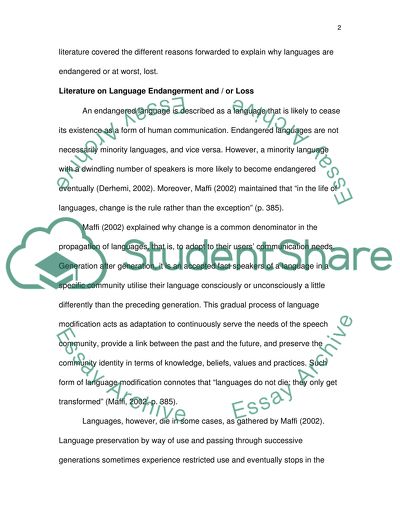Cite this document
(Loss and Endangerment of World Languages Research Paper, n.d.)
Loss and Endangerment of World Languages Research Paper. Retrieved from https://studentshare.org/culture/1417507-cratical-essay-sociolinguistics-lang-gender
Loss and Endangerment of World Languages Research Paper. Retrieved from https://studentshare.org/culture/1417507-cratical-essay-sociolinguistics-lang-gender
(Loss and Endangerment of World Languages Research Paper)
Loss and Endangerment of World Languages Research Paper. https://studentshare.org/culture/1417507-cratical-essay-sociolinguistics-lang-gender.
Loss and Endangerment of World Languages Research Paper. https://studentshare.org/culture/1417507-cratical-essay-sociolinguistics-lang-gender.
“Loss and Endangerment of World Languages Research Paper”, n.d. https://studentshare.org/culture/1417507-cratical-essay-sociolinguistics-lang-gender.


